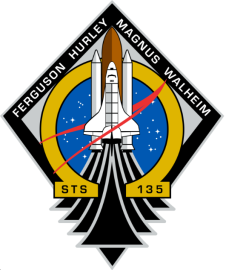You are currently browsing sbi5ar’s articles.
First and foremost, apologies for the late posting of this article! What with the rugby world cup and everything in work it has just been an immense couple of weeks. But alas, the paper is here!
The paper has been chosen by myself (@sbi5ar) and will be discussed with the help of Nel (@helloitsnel).
Title:
A novel siderophore system is essential for the growth of Pseudomonas aeruginosa in airway mucus
Abstract:
Pseudomonas aeruginosa establishes airway infections in Cystic Fibrosis patients. Here, we investigate the molecular interactions between P. aeruginosa and airway mucus secretions (AMS) derived from the primary cultures of normal human tracheal epithelial (NHTE) cells. PAO1, a prototype strain of P. aeruginosa, was capable of proliferating during incubation with AMS, while
all other tested bacterial species perished. A PAO1 mutant lacking PA4834 gene became susceptible to AMS treatment. The ΔPA4834 mutant was grown in AMS supplemented with 100 μM ferric iron, suggesting that the PA4834 gene product is involved in iron metabolism. Consistently, intracellular iron content was decreased in the mutant, but not in PAO1 after the AMS treatment. Importantly,
a PAO1 mutant unable to produce both pyoverdine and pyochelin remained viable, suggesting that these two major siderophore molecules are dispensable for maintaining viability during incubation with AMS. The ΔPA4834 mutant was regrown in AMS amended with 100 μM nicotianamine, a phytosiderophore whose production is predicted to be mediated by the PA4836 gene. Infectivity of the ΔPA4834 mutant was also significantly compromised in vivo. Together, our results identify a genetic element encoding a novel iron acquisition system that plays a previously undiscovered role in P. aeruginosa airway infection.
Questions:
1. Is this paper well written and easy to understand?
2. Does the introduction set the scene for the research presented?
3. Do the methods appear reliable and are they well explained?
4. Do the results and discussion make sense?
5. What (if any) future work could lead on from this?
In addition to these questions, hopefully we can explore whether the clinical significance that the paper portrays is justified though the research methods that have been used.
See you all next Tuesday (20th October 2015) at 20:00 (08:00 pm) BST
Hello #MicroTwJc Fans!
Next Tuesday’s #microtwjc paper (which has just been published this month) is one for all bacteriologists (and virologists that like bacteria!) as it has implications for all bacteria due to the conservation of the bacteria cell cycle.
Title: “FtsZ Placement in Nucleoid-Free Bacteria”
Authors: Manuel Pazos, Mercedes Casanova, Pilar Palacios, William Margolin, Paolo Natale, and Miguel Vicente
Abstract: We describe the placement of the cytoplasmic FtsZ protein, an essential component of the division septum, in nucleoid-free Escherichia coli maxicells. The absence of the nucleoid is accompanied in maxicells by degradation of the SlmA protein. This protein, together with the nucleoid, prevents the placement of the septum in the regions occupied by the chromosome by a mechanism called nucleoid occlusion (NO). A second septum placement mechanism, the MinCDE system (Min) involving a pole-to-pole oscillation of three proteins, nonetheless remains active in maxicells. Both Min and NO act on the polymerization of FtsZ, preventing its assembly into an FtsZ-ring except at midcell. Our results show that even in the total absence of NO, Min oscillations can direct placement of FtsZ in maxicells. Deletion of the FtsZ carboxyl terminal domain (FtsZ*), a central hub that receives signals from a variety of proteins including MinC, FtsA and ZipA, produces a Min-insensitive form of FtsZ unable to interact with the membrane-anchoring FtsA and ZipA proteins. This protein produces a totally disorganized pattern of FtsZ localization inside the maxicell cytoplasm. In contrast, FtsZ*-VM, an artificially cytoplasmic membrane-anchored variant of FtsZ*, forms helical or repetitive ring structures distributed along the entire length of maxicells even in the absence of NO. These results show that membrane anchoring is needed to organize FtsZ into rings and underscore the role of the C-terminal hub of FtsZ for their correct placement.
Discussion Points
- Was the paper clearly written, presented etc. Did it all make sense?
- Were the methods sound? Was there anything extra that you would have done? How were the stats?
- Were the conclusions supported by the results?
- How much of this is new? What are the practical implications?
- What experiments would you do next?
- Hope to see you on Tuesday 1st April, 8pm BST 🙂 (thats right! our clocks will have changed and we’ll be on summer time!)
Morning All,
Apologies for the late posting of this paper. For the upcoming #MicroTwJc (8pm GMT, Tuesday 4th February 2014) we will be following (quite literally) Pseudomonas aeruginosa cells as they try and move around in their environment. This newly relaxed paper was chosen because 1) it uses holographic tracking which is and sounds very cool, and 2) I couldn’t find any newly released rugby-microbiology hybrid papers (to commemorate the start of the six nations! – which is a shame, however there is a nice elite rugby cryotherapy paper out there).
Citation: Vater SM, Weiße S, Maleschlijski S, Lotz C, Koschitzki F, et al. (2014) Swimming Behavior of Pseudomonas aeruginosa Studied by Holographic 3D Tracking. PLoS ONE 9(1): e87765. doi:10.1371/journal.pone.0087765
Authors: Svenja M. Vater, Sebastian Weiße, Stojan Maleschlijski1, Carmen Lotz, Florian Koschitzki, Thomas Schwartz, Ursula Obst, Axel Rosenhahn
Title: Swimming Behavior of Pseudomonas aeruginosa Studied by Holographic 3D Tracking
Abstract: Holographic 3D tracking was applied to record and analyze the swimming behavior ofPseudomonas aeruginosa. The obtained trajectories allow to qualitatively and quantitatively analyze the free swimming behavior of the bacterium. This can be classified into five distinct swimming patterns. In addition to the previously reported smooth and oscillatory swimming motions, three additional patterns are distinguished. We show that Pseudomonas aeruginosaperforms helical movements which were so far only described for larger microorganisms. Occurrence of the swimming patterns was determined and transitions between the patterns were analyzed.
Discussion Points:
- Was the paper clearly written?
- Were the methods chosen appropriate?
- Do the experiments show sufficient proof for the claim that transcriptional regulation is not sufficient to explain flux changes?
- What experiments could be done next?
See you all on Tuesday! Go Wales!
WELCOME TO WEEK 29!


There have been many topics covered over the past year since the inception of this microbiology based twitter journal club. Now it is time to go out of this world and look at how spaceflight affects microbial communities! With the increasing speculation of manned missions to mars, it is imperative that we know how/if bacteria will be affected by space flight. The ARTICLE focusses on P. aeruginosa biofilm formation in zero gravity when travelling on two STS missions. We will meet on the 25th of June (8pm BST) to discuss our thoughts and give insights to the discussion points listed below:
Aled – @sbi5ar
ABSTRACT:
Understanding the effects of spaceflight on microbial communities is crucial for the success of long-term, manned space missions. Surface-associated bacterial communities, known as biofilms, were abundant on the Mir space station and continue to be a challenge on the International Space Station. The health and safety hazards linked to the development of biofilms are of particular concern due to the suppression of immune function observed during spaceflight. While planktonic cultures of microbes have indicated that spaceflight can lead to increases in growth and virulence, the effects of spaceflight on biofilm development and physiology remain unclear. To address this issue, Pseudomonas aeruginosa was cultured during two Space Shuttle Atlantis missions: STS-132 and STS-135, and the biofilms formed during spaceflight were characterized. Spaceflight was observed to increase the number of viable cells, biofilm biomass, and thickness relative to normal gravity controls. Moreover, the biofilms formed during spaceflight exhibited a column-and-canopy structure that has not been observed on Earth. The increase in the amount of biofilms and the formation of the novel architecture during spaceflight were observed to be independent of carbon source and phosphate concentrations in the media. However, flagella-driven motility was shown to be essential for the formation of this biofilm architecture during spaceflight. These findings represent the first evidence that spaceflight affects community-level behaviors of bacteria and highlight the importance of understanding how both harmful and beneficial human-microbe interactions may be altered during spaceflight.
DISCUSSION POINTS:
- Was the article well written with enough background information?
- Were the methodologies used sufficient to derive the conclusions of the paper?
- What experiments would have furthered the conclusions?
- What are the large scale implications (if any) back on earth?
- What is the future of microbial space travel?
Evening All,
This weeks paper looks at some novel inhibitors of Staphylococcus aureus virulence genes and biofilm formation. The abstract and discussion points are listed below and the paper can be found here. The team looks forward to you joining us on Tuesday 19th February 2012 8pm GMT for the discussion!
ABSTRACT:
Staphylococcus aureus is a major human pathogen and one of the more prominent pathogens causing biofilm related infections in clinic. Antibiotic resistance in S. aureus such as methicillin resistance is approaching an epidemic level. Antibiotic resistance is widespread among major human pathogens and poses a serious problem for public health. Conventional antibiotics are either bacteriostatic or bacteriocidal, leading to strong selection for antibiotic resistant pathogens. An alternative approach of inhibiting pathogen virulence without inhibiting bacterial growth may minimize the selection pressure for resistance. In previous studies, we identified a chemical series of low molecular weight compounds capable of inhibiting group A streptococcus virulence following this alternative anti-microbial approach. In the current study, we demonstrated that two analogs of this class of novel anti-virulence compounds also inhibited virulence gene expression of S. aureus and exhibited an inhibitory effect on S. aureusbiofilm formation. This class of anti-virulence compounds could be a starting point for development of novel anti-microbial agents against S. aureus.
DISCUSSION POINTS:
- As always, is the paper well written and coherent?
- Are correct methods used to fulfil the research question?
- Are their any methods you would liked to have seen?
- Are the conclusions reflective of the data?
- Are anti-virulence compounds the next novel anti-microbial agents?
